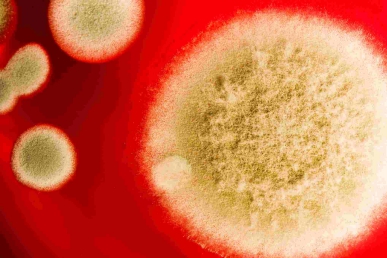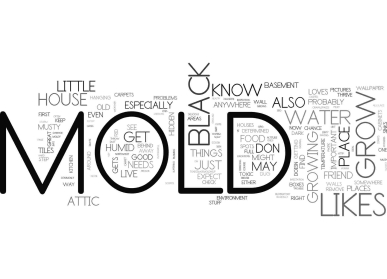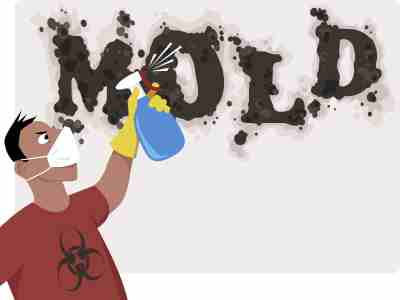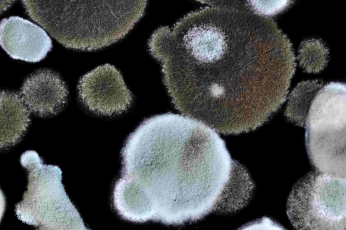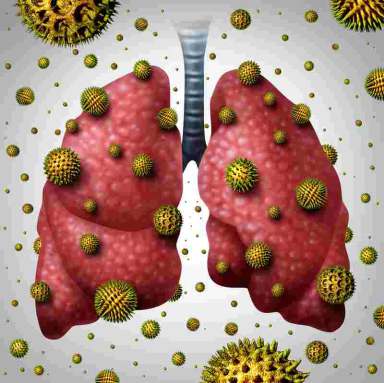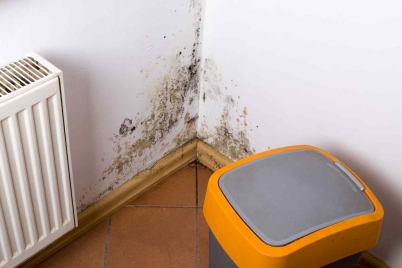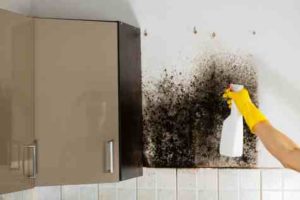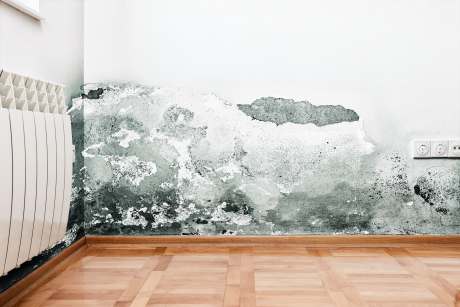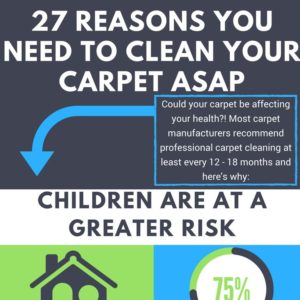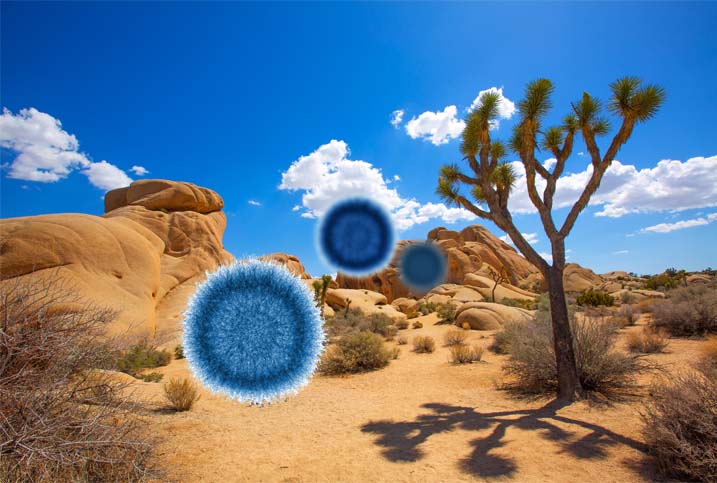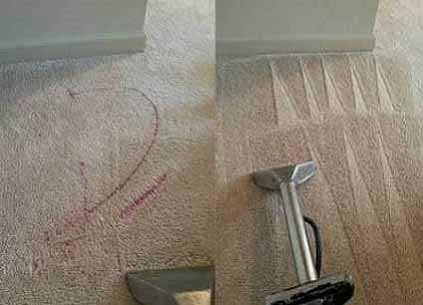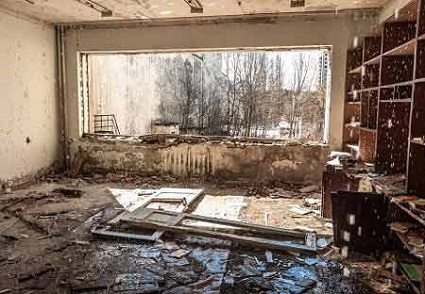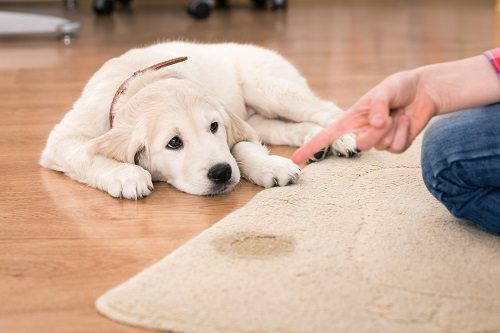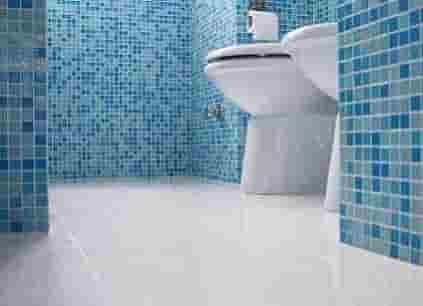Every Home Has Indoor Mold Spores
Have you personally experienced indoor mold? Maybe you have without realizing it.
Did you know that exposure to mold can lead to allergies, infections, and even neurological conditions?
Yup, those sound like some serious issues, and they are. However, mold doesn’t affect everyone the same.
Those who have asthma, allergies, or weak immune systems like children and the elderly, are far more likely to see adverse health effects.
Since molds survive in humid conditions or areas with moisture, controlling any water leaks or damage in your house is essential to avoid mold or mildew growth.
Ever Wonder How Mold Gets Into Your System?
Air quality is a very big contributor to your overall health and well being. After all, breathing is something we tend to do often.
Both indoor and outdoor air is filled with a massive amount of particles that could be a potential health risk. But as long as it’s kept to a minimum those particles usually aren’t a threat.
Mold, which is a type of fungus, reproduces in a way that could seriously increase this health hazard, especially when found indoors.
Molds and mildew distribute airborne spores in order to spread, which can be inhaled in huge amounts. Although mold spores aren’t always dangerous, most have allergenic properties and some even produce toxins, making them threatening when found in high concentrations.
No matter what your thoughts are about mold, it is a crucial piece of the environment. Spores can be found almost anywhere and will always grow under the right conditions. It usually grows on dead and decomposing organic materials outdoors, though.
Since mold loves warm, humid, damp spaces, it can often be found in areas like basements and showers that generally tend to have more moisture.
Many types of mold can commonly be found growing on cardboard, wood, paper products, wallpaper, and ceilings. Check these areas every now and then to stay a step ahead.
Who is Susceptible to Mold Risks?
Mold, like anything, will affect every person a little differently. In high enough concentrations, mold will most likely present at least a few symptoms. But those with impaired or weakened immune systems will usually have more serious reactions to mold exposure.
Some common symptoms of mold and mildew are allergic reactions and lung infections when inhaled, or skin inflammation when contacted directly.
This leaves young children, those with certain medical conditions, pregnant women, and elderly people in a dangerous position when reacting to the effects of these fungi.
Other Ways Mold Can Affect You
So what are some of the common reactions that people may have when exposed to indoor mold? Below are the most frequently reported symptoms that most people experience:
Allergy Like Symptoms
Have you been suffering from irritated eyes, headache, runny nose, sneezing, coughing, fatigue, or a sore throat that seems to be un-explainable? Most types of mold are extremely allergenic. That means when you inhale high concentrations of mold spores you will usually present with allergy like symptoms. You should have your home inspected by a mold remediation specialist if you think you might be reacting to the presence of mold in your house
Development of Asthma Symptoms
This is a very common occurrence among infants and young children exposed to mold. Studies show that the presence of mold and high amounts of moisture in homes often aggravates symptoms in asthma sufferers. Obviously this could be extremely dangerous for those with a predisposition to breathing troubles.
Respiratory Inflammation and Infections
Many respiratory infections including sinus infections, bronchitis, and pneumonia are common symptoms of mold exposure. Because these are common symptoms to other illnesses, people are usually treated for other sicknesses unsuccessfully before realizing they have mold in their home.
Neurological Symptoms
Certain molds produce harmful toxins under the right conditions. The most well-known is probably black mold, which may look slimy and dark green or black, and produces mycotoxins that are harmful to humans. These tricky chemical substances can cause serious neurological problems when they enter your system. Some of these include brain fog, memory problems, headaches, light sensitivity, and tingling sensations in the extremities.
Are All Types of Mold Bad?
The word “Mold” might remind you of many important uses for certain types of fungus.
The truth is despite all the good things that we rely on mold to provide for us, like antibiotics, cheeses, edible mushrooms, and composts, it’s highly suggested that any indoor mold growth be contained and removed completely.
Any type of mold could quickly become dangerous if given a chance to grow in your house, so it’s best to take steps to get rid of it.
Some Common Types of Indoor Molds Include:
Aspergillus
This is a type of mold that is very common and found almost everywhere throughout the world. Exposure to this mold will usually only invoke minor reactions in healthy adults, but some people could develop serious symptoms. You can expect to find Aspergillus growing in areas with heavy water damage and warm climates. Something of note is that this mold does produce mycotoxins which can be harmful to humans.
Cladosporium
This happens to be the most commonly found outdoor mold, but as mold spores are airborne, Cladosporium can often find its way into a home or building. You can look for this type of mold growing on porous surfaces and areas with moisture, like wood in a basement. Many people report having asthma symptoms around large amounts of Cladosporium.
Penicillium
This common type of indoor mold likes to grow on softer surfaces like fabrics or wallpaper. It almost always accompanies water damage, so you’ll normally find it in decaying buildings or areas with heavy water leaks. Some species can produce mycotoxins, but most people only experience allergy symptoms when exposed to Penicillium.
Stachybotrys
This is the scary one. Stachybotrys, or the common black mold, is indeed very toxic and produces airborne mycotoxins. Some bad cases surrounding black mold have included symptoms like breathing problems, memory loss, headaches, flu-like symptoms, and coughing blood. The good news is that Stachybotrys is not found as commonly as other indoor molds because it requires far more moisture than most. Control the moisture in your home and you likely won’t be dealing with black mold any time soon.
Taking Steps to Avoid Indoor Mold Exposure
Mold is very picky about where it grows. That means as long as you don’t provide spores with moisture, you can usually guarantee that your home stays mold free.
If you have visible mold in your home you should contact a professional mold remediation company like us as soon as you can.
Mold specialists have the tools and know how to spot hidden mold and contain it from spreading throughout your home.
However, prevention goes a long way. Here are a few tips to help you inhibit mold from taking up residence inside your home.
- Check around A/C units, windows, and doors to expose any water leaks.
- Use a dehumidifier to keep the humidity level low, especially in basements and crawlspaces.
- Check for roof leaks before and after every storm.
- Routinely investigate pipes and plumbing for any leaks.
- Circulate the air throughout your house with fans.
- Seal wood, grout, concrete, and other porous materials with water-proofing chemical s to prevent indoor mold growth.
- Clean high moisture areas like bathrooms with mold killing cleaning solutions often.
- Ensure materials like carpets are dried completely if exposed to moisture.
- Fix any and all water damage right away. Don’t chance giving indoor mold spores the fuel they need to grow.
DIY Mold Clean Up
It wouldn’t be a stretch to say that the first quick fix you’ll probably discover when searching for how to kill mold is to spray it with bleach.
This can sometimes work, but it’s usually not recommended because chlorine bleach is an extremely harsh chemical that has the ability to kill surface mold, but won’t penetrate porous materials to kill mold at its source. Not to mention the harmful fumes associated with bleach and the possibility of damaging more than just the mold.
If you’re thinking about using an over the counter mold removal product, consider that these solutions are usually only intended to be used on small mold remediation projects like you find on bathroom tile. Killing mold completely consists of reaching deep down to the roots and killing the fungus while also fixing whatever water source the mold is using as fuel.
How Does Professional Mold Remediation Work?
So what do you do if you’re dealing with more than just the average spot of shower mold?
For more serious mold problems, the mold removal process needs to be thorough and intensive to get rid of the infestation for good. Usually the process can be broken down into 5 distinct steps that will remove the indoor mold from your home entirely.
Mold remediation specialists understand how mold spreads and where it grows. They know what steps to take to stop the mold from returning. When you hire a professional, this is usually how it will go:
Inspection
Many mold remediation companies will offer free visual inspections to help identify if you have a mold problem and the extent of it. This may take some time. Mold likes to grow out of sight and in dark areas, so it usually takes serious effort to find it all. This is also the time that any sustained water damage or moisture issues can be addressed and fixed.
Containment
Containing the mold is an especially important step. The contaminated areas will need to be contained to stop any chance of it spreading. That’s because mold reproduces by releasing airborne spores that travel through your home quickly and easily. There’s no point in trying to kill mold in one area only to find that it sprouts up again in another, unless you want to play a real life game of Whack-A-Mold.
Removal
The next step is to remove any materials that have been contaminated by mold. Mold will grow into porous materials like wood. That means it’s difficult to remove or kill every bit of mold that might be present in your home. Any porous materials that could be harboring mold roots need to be disposed of properly and replaced with new materials. Depending on the extent of the mold damage, another option is using anti-microbial.
Cleaning the Air
Since the air in a moldy home could be riddled with indoor mold spores, it requires filtration to be replaced with fresh air. There’s only one type of filter with the ability to trap mold spores. HEPA (High Efficiency Particle Air) Vacuums are rated to catch 99.97% of particles of 0.3 microns in size, meaning it will suck up any mold spores that might be flying around your home.
Lab Testing and Results
Even though it’s recommended that any mold growth in your home be removed no matter the type of mold, it’s always a good idea to have it tested. This can tell you if the mold was toxic or not. It also normally gives you more insight as to what conditions caused the fungus to take a liking to your home.
You Can Beat Indoor Mold
Mold may sound like some sort of scary monster, but if you’re serious about prevention you can stop it from grabbing a foothold in your house. The best approach is to keep a routine cleaning schedule and solve any water damage issues or leaks without hesitation. This includes regular checkups on hidden, out of sight or hard to reach areas in throughout home.
Keep in mind that just because you may have cleaned a spot of mold doesn’t mean it’s gone forever. Indoor mold growth is caused by damp and humid conditions. Moisture control will always be the most important action against mold and mildew. Don’t be afraid to ask for help if you have water damage that has gotten out of hand and transformed into a mold issue. Mold remediation is no joke, as your health and home are at stake. Reputable professional mold remediation companies are there to help you tackle mold issues that may be too much to handle by yourself.
If you want help from an award winning mold remediation company, reach out to us anytime. We have qualified technicians on call 24/7 for emergencies and free visual mold inspections.
